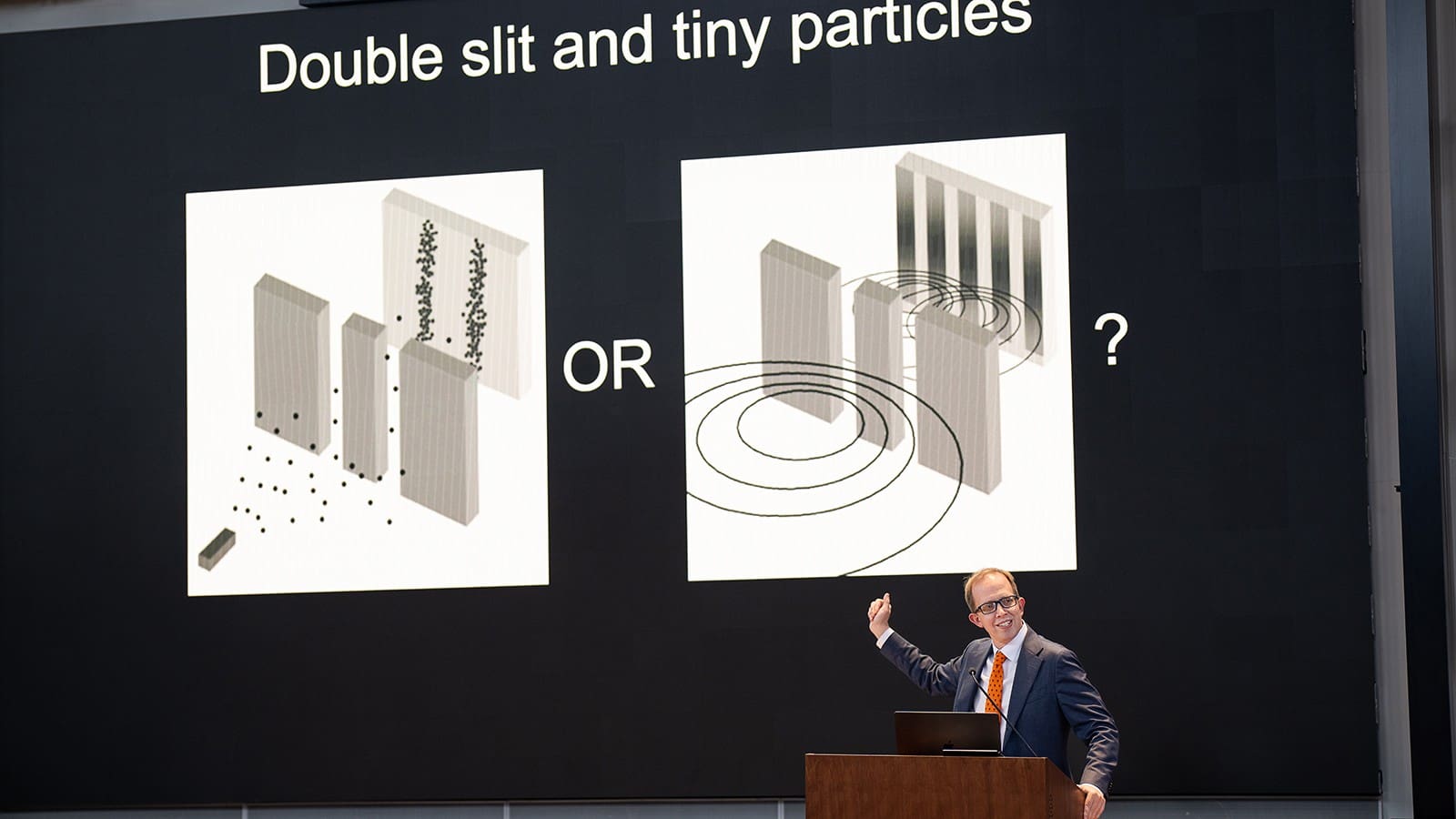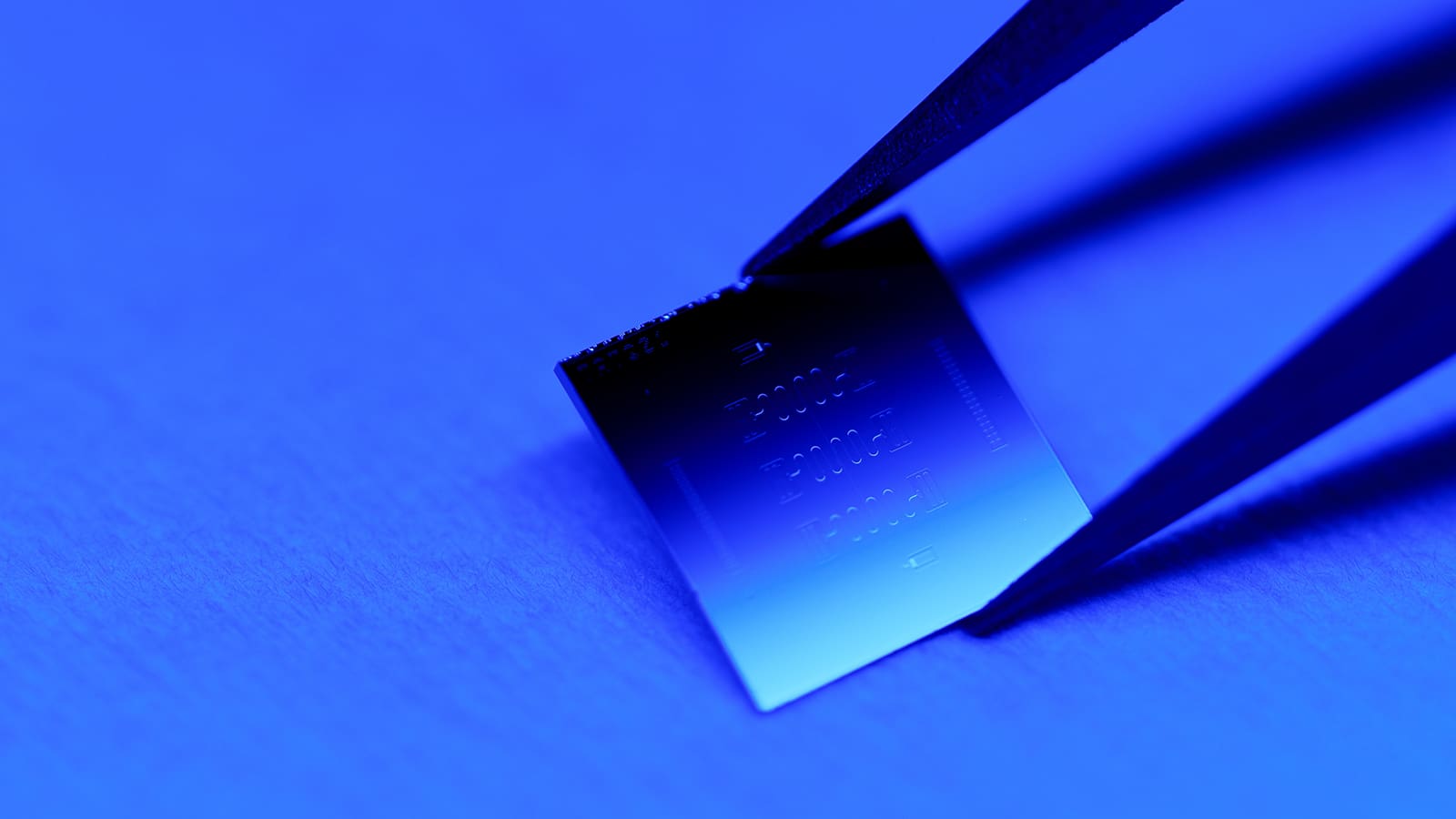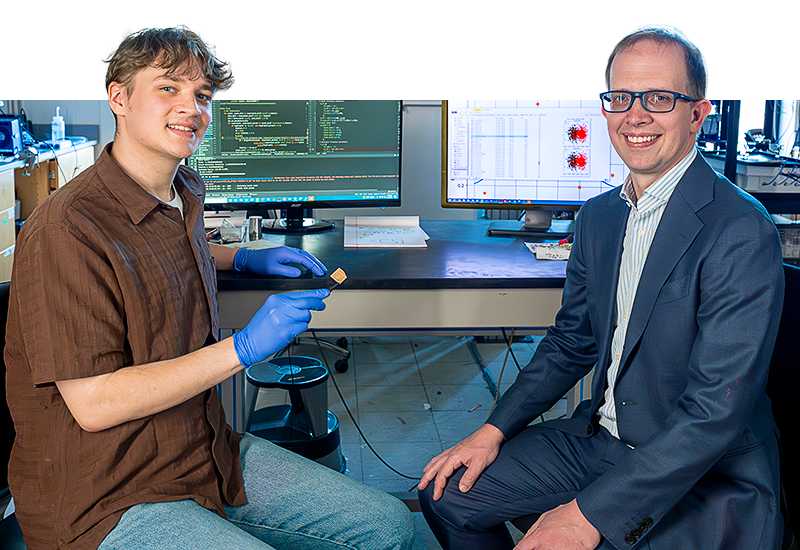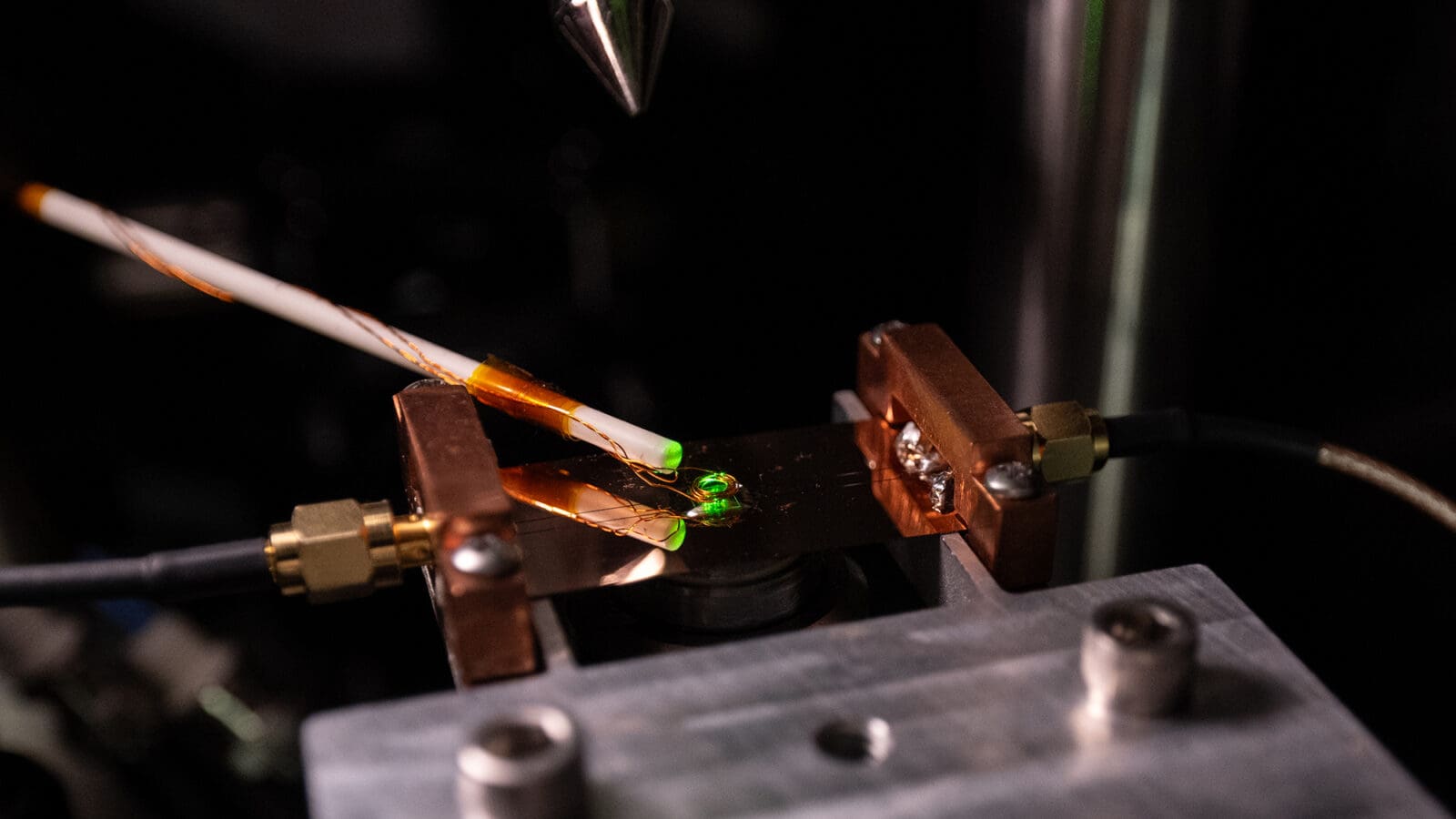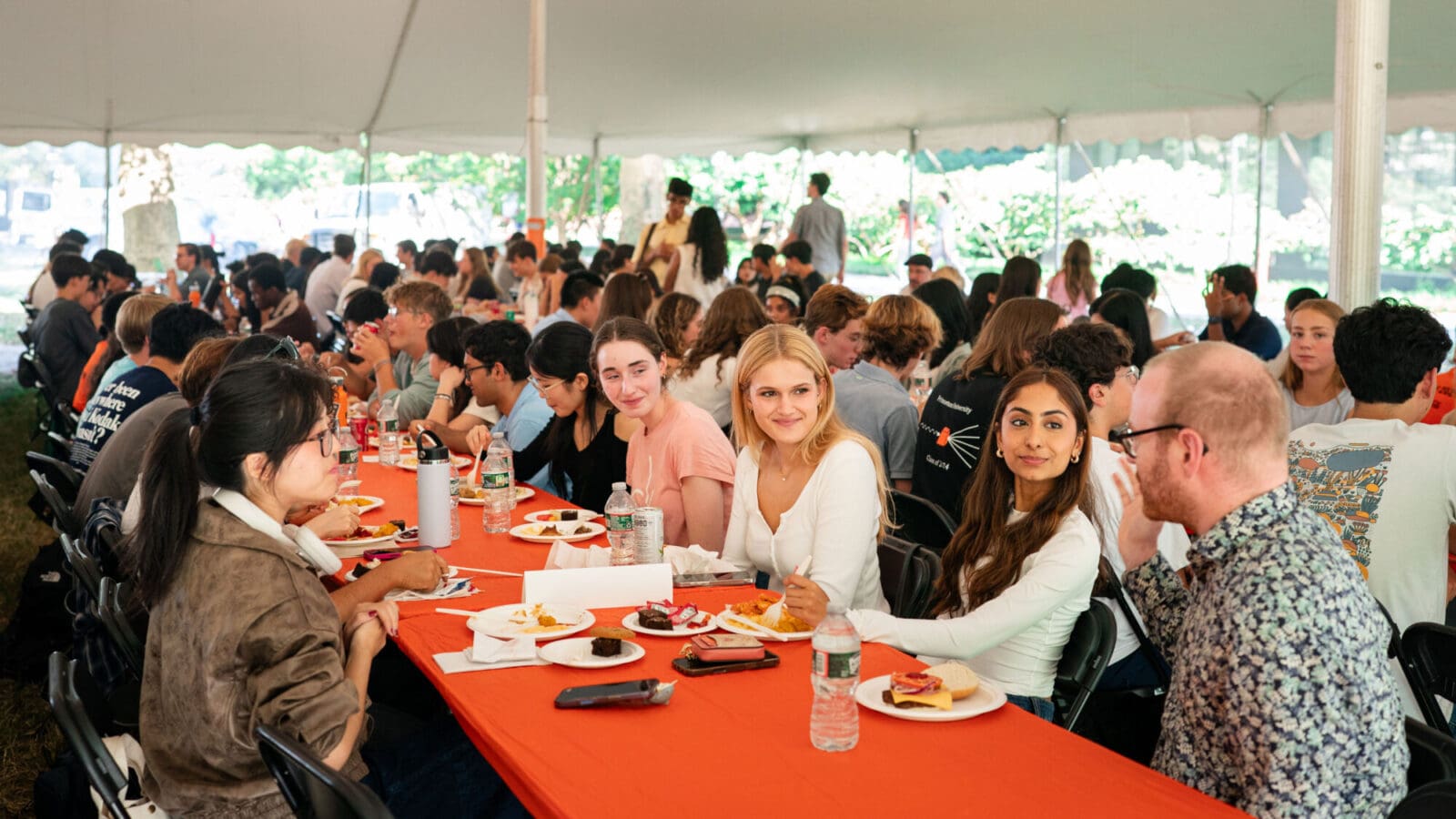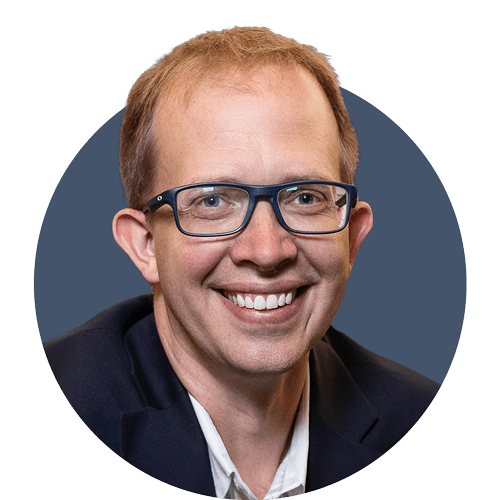
Andrew Houck seeks a quieter quantum world
By
on
This article is from the Quantum issue of Equad News magazine.
“A single atom out of place could spell disaster,” said Andrew Houck, a professor of electrical and computer engineering and a leading expert on quantum information technology.
“We are trying to preserve these incredibly weak signals and isolate them from the world,” he said. “At the same time, if we have a computer that’s completely isolated from the world, we can’t actually program it. We can’t use it.”
Scientists have a simple term for all those unwanted effects. Noise. Houck said when he talks about noise, he isn’t talking about sound but about the sum of destructive forces threatening to knock his systems out of balance.
In 2021, Houck was named director of the U.S. Department of Energy’s Co-design Center for Quantum Advantage, where he leads a team of 88 principal investigators from 25 institutions. Their mission? To quell the noise and put quantum computers on the path to practical use.
“We’re actually looking for the sources of noise,” he said, “and we’re trying to get rid of them.” What he can’t eliminate, he tries to dampen, he said, “like wearing earplugs.” Another approach, which he likened to wearing noise-cancelling headphones, actively corrects for the error-causing noise that leaks into a system despite all other efforts. Combined, these three approaches have brought quantum computing to the edge of viability.
Houck has focused much of his work on the earplugs approach, designing systems that are insensitive to specific kinds of noise. In 2007, while a postdoc at Yale, he was part of a team that invented a component called the transmon. It’s now the foundation for the world’s most advanced quantum computers, including those built by Google and IBM.
The transmon is a circuit that acts like an atom with discrete energy levels. Pairs of electrons jump between two metal islands in the circuit, creating states that can be processed as quantum bits of data called qubits. Qubits contain richer information than classical bits. But at the slightest provocation, that information collapses, and the qubit’s information is lost. The transmon’s key breakthrough was its insensitivity to noise from electric charge, eliminating one source of qubit-killing error.
A recent redesign spearheaded by Houck’s graduate students, in collaboration with the groups of Nathalie de Leon and Robert Cava, swapped metals in a key part of this circuit, making the device indifferent to another source of noise. That change brought the biggest improvement to transmon performance since 2012, representing a three-fold increase in the qubits’ lifetimes. Longer lifetimes yield more reliable machines that can solve the kinds of intractable problems that make quantum computing so promising.
“That framework is going to allow us to move forward and think, more broadly, what are other metals we might use? What are the other things we could try?” Houck said.
He said the next phase of quantum computing will involve developing better and more specialized components that are integrated into a complex architecture.
“Different pieces of a chip have different roles to play,” he said. “So maybe there’s a qubit that can act as memory and store data for a long time. Maybe there’s a qubit that you use for active processing. Maybe there’s a qubit that doesn’t ever actually store any information, but it mediates the coupling between other qubits and enables better gates.”
Today’s best quantum computers use a few dozen general-purpose qubits, compared to classical computers that contain billions of specialized parts. Houck said scaling quantum computers is a job for industry, and that academics are best suited for inventing pieces that change how scaling works.
“We’re knocking on the door of the threshold,” he said.
Scientists don’t quite know what lies beyond that threshold, but they know it will bring a fundamental shift.
“All the computers that we have built have only ever been operating in this subset of what the universe allows,” Houck said. “There is some deeper and more fundamental element of computing, and maybe quantum computers are it. If we could build those, then we could really access everything that is solvable.”
